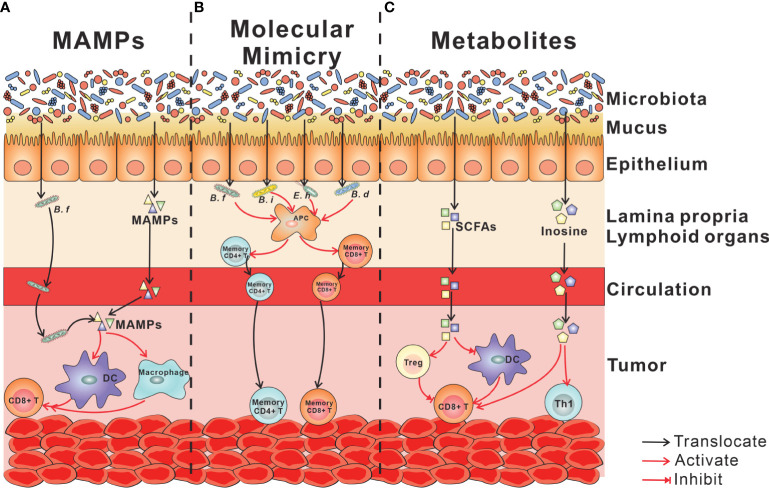Figure 1.
Mechanisms linking gut microbiota with cancer immunotherapy. (A) MAMPs. Live bacteria (Bifidobacterium facilitates) and MAMPs traverse the mucosal barrier, enter the circulation, and finally locate at the tumor tissue, where MAMPs activate myeloid cells, including DCs and macrophages. The activation of myeloid cells enhances the phagocytosis of macrophages and cytotoxicity of CD8+ T cells downstream. (B) Molecular mimicry of microbial antigens with tumor neoantigen. Antigens of commensal bacteria, including Bifidobacterium facilitate, Bifidobacterium intestinihominis, Enterococcus hirae 13144, and Bifidobacterium breve, are presented by APCs to CD4+ T cells and CD8+ T cells. By circulations, antigen-specific T cells arrive at tumor tissue and cross-react with tumor neoantigen. (C) Microbial metabolites. Microbiota-derived SCFAs play an immune-suppressive role in the tumor microenvironment via increasing the portion of Tregs, inhibiting DC maturation and CD8+ T-cell activation. Microbiota-derived inosine acts to advance Th1 differentiation and CD8+ T cytotoxicity. MAMPs, microbe-associated molecular patterns; DC, dendritic cell; APCs, antigen-presenting cells; SCFAs, short-chain fatty acids.

